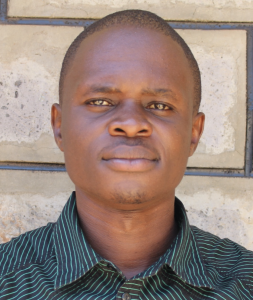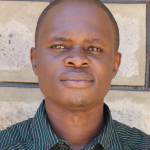A typical day for the 155 students of Friends Musiri Secondary School begins at 7:00 am when they arrive in school carrying water from home. The 15 teachers and staff check to make sure students' containers are full, or the pupils are sent back out if not. The school day continues until 4:00 pm with breaks between classes and lunch when students are asked to fetch more water from home.
Friends Musiri Secondary School was started in 2008 with just 6 students who borrowed class space from the primary school. The secondary section was started as a community project to cater to students who could not afford boarding fees at other schools. In 2016, the school moved to its current compound and now has its own classrooms, staff room, kitchen, and a few latrines each for girls and boys. But what the school feels most, however, is what it still lacks: its own source of clean water.
This is why every day, multiple times, students are required to make the trek home to carry water back to school. Each walk is tiresome and time-consuming and disrupts pupils' precious learning time, affecting their academic performance.
"The learning and teaching process is interfered with, especially when our students are requested to carry water to school every day. There are some who abscond classes for fear of carrying water to school," said Principal Julius Nyavuke.
Students pull from multiple sources when they collect water at home, and the school staff are not able to monitor the sources for their safety or quality. A spot check of the containers students use to carry their water to school showed that a majority were not clean on the inside. Quite a number had no covers, and this can also expose water to contaminants. Even clean sources of water are wasted in dirty containers, and since students combine water for use in plastic storage drums and pots at school, even 1 contaminated source means everyone is at an elevated risk for waterborne diseases.
"It being a scarce commodity in our institution, I am forced not to drink water even when I am thirsty for fear that it might be contaminated, especially when I forget to carry my own drinking water from home," said pupil Margaret, who trusts her family's water source over some of the other student's sources.
When students contract waterborne diseases, they miss school and have to spend time seeking treatment, which is expensive for both the school and parents. But, since the water students bring is the only source for the entire school population's drinking, cooking, and cleaning needs, it is consumed despite fears of it being unsanitary.
Hygiene is wanting in this school since there is often not enough water to spare for things like the 1 handwashing station outside the staffroom. With just 4 doors of latrines for the girls and 3 for the boys, the school is challenged by the overcrowding and overuse of the latrines compared to the student population.
What We Can Do:
Rain Tank
A 75,000-liter rainwater catchment tank will help alleviate the water crisis at this school. The school will help collect the needed construction materials such as sand, bricks, rocks, and water for mixing cement. We will complement their materials by providing an expert team of artisans, tools, hardware, and the guttering system. Once finished, this tank will begin catching rainfall that will be used by the school’s students and staff for drinking, handwashing, cooking, cleaning, and much more.
We and the school strongly believe that all of these components will work together to improve standards at this school, which will help lead to better student academic performance and will help to unlock the potential for these students to live better, healthier lives.
Handwashing Stations
There is currently just 1 handwashing station for students to clean their hands after using the latrines or before eating lunch, but rarely the water or soap to do so.
The student health club will oversee the 2 new handwashing stations we will provide, and make sure they are kept clean and in working condition. The club leaders will fill the handwashing stations with water daily and make sure they are always supplied with a cleaning agent such as soap or ash.
VIP Latrines
2 triple-door latrine blocks will be constructed with local materials that the school will help gather. 3 doors will serve the girls while the other 3 will serve the boys. All of these new latrines will have cement floors that are designed to be easy to use and to clean. And with a rain tank right on school property, there should be enough water to keep them clean.
Training on Health, Hygiene, COVID-19, and More
We will hold a 1-day intensive training session with students, teachers, and parents. This training will cover a wide range of topics including COVID-19 symptoms, transmission routes, and prevention; personal and environmental hygiene; and the operation and maintenance of the rain tank, latrines, and handwashing stations. There will be a special emphasis on handwashing.
Our team of facilitators will use a variety of methods to train, including participatory hygiene and sanitation transformation, and asset-based community development. We will initiate a student health club, which will prepare students to lead other pupils into healthy habits at school and at home. We will also lead lectures, group discussions, and provide illustrative handouts to teach health topics and ways to promote good hygiene practices within the school including handwashing and water treatment. We will then conduct a series of follow-up trainings before transitioning to our regularly scheduled support visits throughout the year.

 Rainwater Catchment
Rainwater Catchment
 Rehabilitation Project
Rehabilitation Project















































